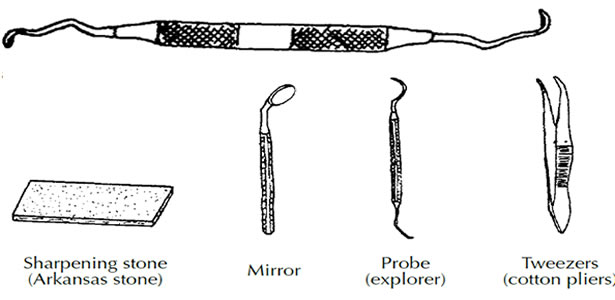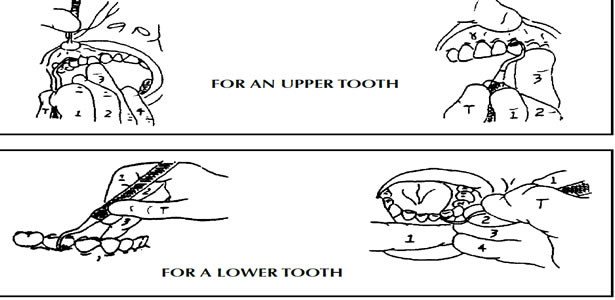Scaling
Scaling means ‘scraping away.’ You can scale old food, tartar, or even a fish bone caught under the gum. You usually scale Scaling to remove tartar.We get tartar when the coating of germs on our Scaling becomes hard.
Gums that press against tartar become sore and infected. Clean Scaling keep our gums healthy. Scaling a person’s Scaling gives infected gums a chance to become normal again.
Scaling is a common dental procedure for patients with gum disease. This is a type of dental cleaning that reaches below the gumline to remove plaque buildup. The process of scaling and root planning the Scaling is often referred to as a deep cleaning. This treatment goes beyond the general cleaning that you receive with your regular checkup and annual visit.

Dental scaling can be uncomfortable, particularly if you have sensitive gums. Your dentist may offer a local anesthetic to numb your gum tissue and make the procedure more comfortable. Speak with your dental care provider about your options for desensitizing the area if you’re concerned about pain or discomfort during the process.
Dental scaling can take several visits, each one addressing a different portion of the mouth. Some dentists divide the mouth into four quadrants, while others will perform dental scaling in two halves. If you’re nervous about the process, ask your dentist if you can schedule your scaling for a single visit. Though this isn’t an option for all cases, it may be available if you have only moderate gum disease and are willing to sit for a lengthy procedure.
Benefits of Scaling You Didn't Know About
No matter how well you take care of your Scaling, plaque and tartar buildup are inevitable for everyone. Bacteria colonies form in our mouths every time we eat or drink, and while brushing, flossing, and using mouthwash are an effective strategy for getting rid of most of these particles, some always remain.
Helps eliminate bad breath - Whether you are plagued by chronic bad breath (referred to as halitosis) or the occasional bout of malodor, scaling can significantly improve the problem by getting rid of its source.
It’s good for your heart - There have been countless studies performed on the correlation between a person’s oral and overall health. Gingivitis and gum disease have a direct effect on your cardiovascular well-being. Your risk of heart diseases, high blood pressure, stroke, diabetes and many other life-threatening illnesses can be greatly reduced by simply removing the tartar which acts as the cause factors for so many of these debilitating diseases.
It will save you money- Taking good care of your Scaling and mouth at home and by visiting the dentist or hygienist regularly, will save you thousands of dollars or more over your lifetime. Regular cleanings by your hygienist help prevent cavities, but more importantly identify cavities or caries at an early stage. Taking care of a small cavity which may cost you a few hundred dollars can be a easy and simple procedure. Left untreated inevitably will lead to unwanted complications including; infection, root canal treatment, tooth loss. All unpleasant outcomes those are very expensive to remedy.
The best thing is to go and see a dentist, but if you wish to carry out this procedure at home where there is no dentist, there are some of the instruments you we need:

The Instruments You Need For Scaling
We scale Scaling with special instruments called scalers. There are many different kinds of scalers for different Scaling, to make scaling easier. It can be a problem to know which ones to buy.
Scalers are expensive instruments. For that reason, it is better to order only a few instruments that you can use to clean most Scaling.
You need only 2 double-ended scalers, or 4 single-ended scalers.
For instance:
1. One with two pointed tips—to remove tartar from the part of the tooth near the gum.
2. Another with two blunt, rounded ends—to remove tartar from the part of the tooth under the gum.
The ends of the scaler are the important parts. One end is bent to the left and the other end is bent to the right, so you can reach more easily around all sides of the tooth.
The blade at each end of the scaler is sharp. You must keep the blade sharp.
A sharp blade can break more of the tartar away than a blunt blade.
You also need these:
Note: When you order an instrument, use both its common and proper name. Then you have a better chance of receiving the instrument you want.
You can also make some of your own instruments.
How to Scale Scaling
Tartar starts to form inside the gum pocket. There it builds up, because the gums protect it. So you often must feel rather than see the tartar when you scale a tooth.
You must remove all of the tartar so the gums can heal. New tartar grows faster when there is old tartar Ieft behind for it to build upon.
Lay out what you need ahead of time:
The steps in scaling Scaling are these
1. Explain to the person what you are going to do.
2. Feel under the gum for rough spots (tartar).
3. Place the scaler under the tartar.
1. Explain what you are going to do. Tell the person what to expect.
There will be some bleeding and possibly some pain. However, you can stop and rest, or inject local anesthetic, if it is painful. Remember: first wash your hands and your instruments!
2. Feel under the gum for tartar. Tartar feels like a rough spot on the root of the tooth. Since tartar can form anywhere inside the gum pocket, feel for it on all sides of the tooth. your instruments: scalers, mirror, probe, tweezers sharpening stone cotton gauze
Your light must be good enough to see the tooth and gums around it clearly.
Scaling Scaling requires time and practice. Make yourself and the person comfortable. You can sit next to a special chair that lets the person lean back
3. Place the scaler under the tartar. You must learn two important things:
How to hold the scaler and how to slide the scaler into the gum pocket
Hold the scaler almost as you would hold a pen. You can then pull it against the tartar with both power and control.
Control is very important.
The ends of the scalers are sharp. If you are not careful, the blades can cut the gums.
Be gentle and do not hurry. Always hold the tip of the scaler on the tooth to avoid poking the gums.
Rest your 3rd finger against a tooth. This will steady your hand and let you slide the sharp scaler under the gum with care.
Refrence:
Where there is no dentist




